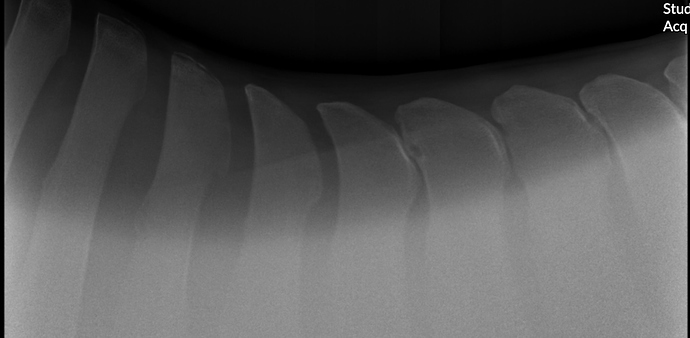Hey all - posting this in eventing since folks probably have more OTTB experience in this group.
I’ve been on the hunt for 3 months now for a horse. Show hunter, up to 3’ (though 2’6" is fine), quiet brain and nice balanced canter.
I’ve vetted two, both of whom had red flag issues for jumping (navicular bone cysts and advanced knee arthritis as a 4yo).
I found another one who I REALLY liked. Has such a gorgeous canter, fun to ride, light, balanced, sweet on the ground, all the things.
On an initial PPE that someone did before I could try him, they found some Grade 2 Kissing Spine. The back was only X-rayed because the potential buyer was buying for resale - horse did not palpate on the clinical exam. Horse had an otherwise “excellent” clinical from a very picky vet at a high level local practice. Vet was bummed about the findings b/c the horse was so nice and they knew their client’s business partner had zero tolerance for it in resales.
Now here’s where I’m at - I only X-ray the back if it palpates on clinic and/or the vet suspects something on the ridden examination, because I know so many have asymptomatic KS. So if I had done the first PPE, I most likely would not have found it. But, now I know and I can’t unknow.
Every horse is going to have something. Vets I’ve consulted have all been ranging from “I think this can be managed for the job you want it to do, it’s a nice horse,” (this was the vet who performed the PPE who I spoke with) to " All KS has a high degree of risk and you just need to decide if you’re willing to take the chance on an unproven horse" to “Sclerosis of the bone in research hasn’t been correlated with increased pain.” (he has space between all dorsal processes but some sclerosis in 4 places.
I can’t help but picture the scenario where I pass on this horse, find one I like but not as much and he doesn’t palpate on his back and passes the rest of the PPE, and then two years later he’s diagnosed with KS anyways and has it even worse than this one.
Would you investigate further, maybe get a chiro vet out to assess biomechanics/back health? Walk away now?


 Practical and straightforward as always!
Practical and straightforward as always!